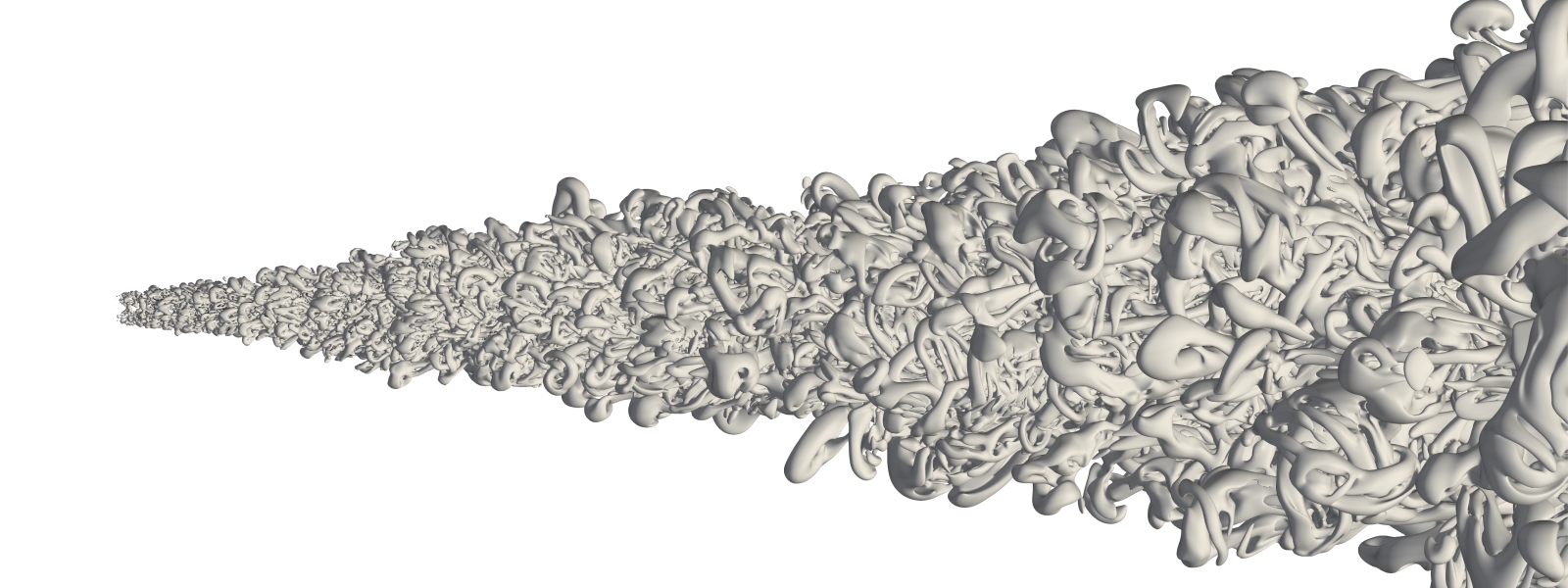
Aerodynamics concerns the motion (or flow) of air around objects and the forces generated. These forces, that can be resolved into lift and drag forces, determine the aerodynamic performance of the vehicle. In general, a flight vehicle designer’s goal is to optimize aerodynamic performance, subject to considerations brought in by the vehicle’s engine, structure, controllability, and maneuverability. Effective and efficient engineering of flow to achieve desired aerodynamic performance demands a good understanding of the underlying flow physics. Fundamental research in the Aerodynamics stream is aimed at understanding the physics of flows, which are broadly relevant to air and space flight, through a combination of experiments, computations, and theoretical efforts. Given the ubiquitous nature of fluid flow, research advances in aerodynamics often have an impact in other areas outside the realm of air and space flight.
Since the 1950s, the Aerodynamics stream of this department has produced several globally impactful research outcomes in the areas of laminar-to-turbulent flow transition, turbulent shear flows, high-speed flows and shock waves, mathematical and computational methods, and the development of novel experimental techniques. Alongside fundamental research, faculty and students from this stream have also made significant contributions to several of India’s aerospace and defense programs. Experimental research has been a traditional area of strength, with several wind tunnels (subsonic, supersonic, hypersonic), shock tunnels, and shock tube facilities developed over decades. Noteworthy among these are the Open Circuit Wind Tunnel (OCWT), the largest subsonic wind tunnel in India; the Roddam Narasimha Hypersonic Wind Tunnel, one of the largest university-based hypersonic wind tunnels in the world (and one of three hypersonic wind tunnels in India, the other two being at ISRO and DRDO); and the Laboratory for Hypersonic and Shockwave Research (LHSR), which houses state-of-the-art shock tubes, shock tunnels, and supersonic jet facilities for frontline research on shockwaves and their interactions in various media. LHSR has been a technological nursery leading to several patents on the application of shockwaves in various fields, including drug delivery, wound healing, and industrial processes.
These strengths in experimental aerodynamics are nicely complemented by expertise in flow modeling, computational method development, and high-performance computing. Various in-house CFD codes have been actively developed by different research groups in the department, with new capabilities constantly being integrated. Each of these codes uses different numerical techniques such as Finite Volume, Finite Difference, Finite Element, or Lattice Boltzmann, based on the intended applications and the flow models (RANS, LES, DDES, DNS) that are to be solved numerically. Flow computations using these CFD codes are routinely performed on hundreds or thousands of processor cores on the high-performance computing (HPC) clusters available in the department and on the NSM supercomputer ‘Param Pravega’ at IISc.
The future of aerodynamics research is exciting, driven by grand challenge problems in the form of environmentally sustainable aviation, electric aviation, supersonic and hypersonic transport, and low-cost and easy access to space. Taking on these grand challenge problems requires us to push the limits of our fundamental understanding of flows, and develop next-generation engineering tools.
Key Focus Areas
- Laminar-to-turbulent flow transition
- Unsteady and turbulent shear flows
- High-speed flows and shock waves
- Large-eddy simulations (LES) and direct numerical simulations (DNS)
- Algorithm development for flow computations
- Automated mesh adaptation for flow simulations
- Experimental techniques and sensor development